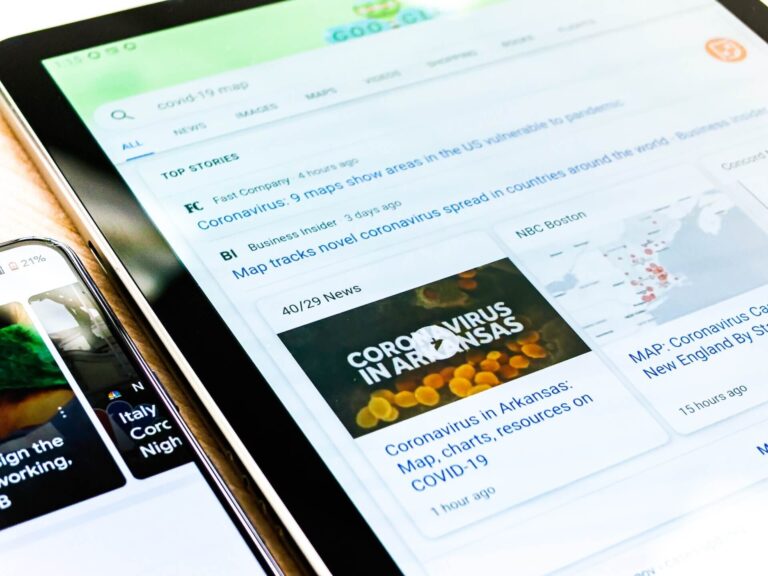Digital Marketing for Solopreneurs | Top 5 Strategies on a Budget
Being a solopreneur can be tough. You’re juggling multiple responsibilities—running the business, managing clients, and handling day-to-day operations—all by yourself.
One of the biggest challenges you’ll face is figuring out how to market your business on a tight budget. Unlike big companies, you don’t have thousands of dollars to spend on fancy marketing campaigns.
Every dollar counts, and wasting money on ineffective marketing can really hurt your business.
Importance of Digital Marketing for Solopreneurs
In today’s business world, digital marketing is no longer optional—it’s essential. It’s how you can reach potential customers, stand out from the competition, and build a recognizable brand.
Whether you’re a freelance designer, a consultant, or a small business owner, digital marketing lets you connect with people who need your services.
What’s even better is that it’s accessible to anyone, no matter the size of your business or your marketing budget.
Unlike traditional forms of advertising (like TV or print ads), digital marketing is cost-effective and offers tools to measure your results in real-time. You can target specific audiences and adjust your campaigns as needed.
This makes digital marketing an affordable and powerful tool for solopreneurs who need to make every marketing dollar stretch.
How Solopreneurs Can Succeed on a Budget
Even with limited funds, you can market your business successfully if you use the right strategies.
Content marketing, social media, SEO, email campaigns, and collaborations can all be done with minimal cost but can have a big impact. With digital marketing, it’s not about how much you spend but how smartly you use the resources you have.
By focusing on providing value to your audience, you can build trust and generate leads without having to rely on huge ad budgets!
In this blog, we’ll break down five key digital marketing strategies that solopreneurs can use, even on a shoestring budget.
These are tried-and-tested methods that can help you attract customers, build your brand, and grow your business without spending a fortune.
Let’s dive in!
1. Content Marketing: Providing Value with Minimal Costs
Content marketing is one of the best ways of Digital Marketing for solopreneurs to promote their business without spending a lot of money.
The idea is simple; you create helpful or entertaining content that speaks directly to your target audience. This can be blog posts, videos, or even fun social media posts.
When you share good content, people will find it interesting and want to visit your website or social media pages. It’s a great way to connect with customers and grow your business while keeping costs low!
Why Content Marketing Works for Solopreneurs
- Build Trust and Authority: When you consistently share valuable content, people begin to see you as an expert in your field. They’ll trust you and be more likely to buy your products or services.
- Low-Cost, High Impact: Content like blogs, videos, and infographics can be created for free or at a very low cost. Plus, it keeps working for you long after it’s published.
Content Creation Ideas for Solopreneurs
- Blogging: Write blog posts about topics your audience cares about. For example, if you’re a freelance designer, you can write about design tips or trends.
- Videos: Make short, engaging videos with tips, tutorials, or behind-the-scenes looks at your business. You don’t need fancy equipment; a smartphone will do the trick!
- Infographics: These are visual representations of information. They’re easy to create using free tools like Canva and can be shared across social media platforms.
Tips for Maximizing Content Marketing Efforts
Consistency is Key: Posting regularly helps you stay on people’s radar. Whether it’s once a week or once a month, find a schedule that works for you and stick to it.
Repurpose Content: Don’t create new content for each platform. Turn a blog post into a video, or share parts of it as social media posts. This saves time and keeps your message consistent.
Case Study: Thomas Frank’s Journey to $2.1M a Year Through Blogging and YouTube
Thomas Frank started his journey as a solopreneur by sharing his productivity experiments and tips during his college years through a blog.
As he delved deeper into content creation, he expanded into YouTube, creating videos focused on personal development and productivity.
Eventually, his content evolved to include Notion templates, which became a major revenue stream for him.
Key Strategies:
- Starting Small: Thomas began by writing simple blog posts about productivity. As his audience grew, he consistently delivered valuable content that addressed their needs.
- Diversification: Beyond blogging, Thomas leveraged multiple platforms like YouTube, podcasts, and courses, which helped him tap into different types of audiences and generate multiple income streams.
- Monetization through Products: His business model evolved to include selling digital products like Notion templates, which now generate over $120,000 per month.
- Community Engagement: Thomas continuously engaged with his audience, responding to comments and questions, which helped him build trust and a loyal following.
By focusing on these strategies, Thomas scaled his solopreneur venture to a multi-million dollar business (vervology®) (Starter Story).
2. Social Media Marketing: Free Exposure with a Direct Line to Customers
Social media is a another great way of Digital marketing for solopreneurs to reach people without spending a lot of money. It lets you connect directly with your customers and show them what makes your business special. Here are some ways to make social media marketing work for you, even with a small budget.
Choosing the Right Platform
Different social media platforms work best for different kinds of businesses. Here’s how to pick the right one:
- Facebook and Instagram are great if you sell products or offer services that everyone can use, like a local bakery or personal fitness training. They have lots of users and work well for showing pictures, videos, and short updates.
- LinkedIn is better if you’re in a business-to-business (B2B) field, like consulting or freelance writing. LinkedIn is a professional space where people connect for work, so it’s perfect for finding clients or partners in these industries.
Choosing the right platform helps you focus your time and energy on the people most likely to become your customers.
How to Grow an Organic Following
“Organic” means you’re growing your following without paying for ads. Here are some ways to do that:
- Engage with your followers: When people comment on your posts, reply to them! Ask questions in your posts so your audience can respond and feel involved.
- Join groups or communities: Facebook groups and LinkedIn groups are great places to meet people who might be interested in your business. Share helpful tips, answer questions, and build relationships without being too “salesy.”
- Use hashtags: On platforms like Instagram, hashtags help people find your posts. For example, if you’re a solopreneur who bakes cakes, you can use hashtags like #bakerybusiness or #homebaker. This makes it easier for people searching for those things to find your posts.
By interacting with others and using the right keywords, your following can grow without needing a big budget.
Low-Budget Paid Ads
If you have a little money to spend, social media ads can help you reach more people. You don’t need to spend a lot — even $5 a day on Facebook or Instagram can make a difference.
- Target your audience: Both Facebook and Instagram let you choose who sees your ads. You can pick people based on things like their location, age, or interests. If you own a local business, you can show ads only to people who live nearby.
- Use lookalike audiences: Facebook has a tool that shows your ads to people who are similar to your current followers or customers. This is a smart way to reach new people who are likely to be interested in your business.
Starting with small ads allows you to test what works best before investing more money.
Social Media Tools to Save Time
Managing social media can take time, but there are free or cheap tools that can help:
- Buffer and Hootsuite: These tools let you schedule your posts ahead of time. So, you can sit down once a week, plan your posts, and then schedule them to go live later. This saves you time every day.
- Analytics Tools: Instagram and Facebook both have free analytics tools that show you how your posts are doing. You can see how many people liked, shared, or commented on your posts and which posts are the most popular. This helps you figure out what works best with your audiences.
Using these tools, you can manage your social media in less time and get better results.
Case Study: How One Solopreneur Used Instagram to Grow Their Business
A great example of social media marketing on a budget comes from the story of Joy Cho, a solopreneur who founded Oh Joy!, a lifestyle brand. Joy started small, using Instagram to share her designs and everyday moments. By consistently posting colorful and engaging content, she attracted a large audience without relying on expensive ads.
She used Instagram Stories to show behind-the-scenes moments and connect with her followers on a personal level, which helped build trust. Over time, her following grew organically, and she even collaborated with major brands like Target. Today, she has over 400,000 Instagram followers and continues to use social media to grow her brand.
For more on her success, check out this article: Oh Joy’s Instagram Success Story(SEO Cost Savings).
By focusing on the right platforms, engaging your audience, using affordable ads, and taking advantage of time-saving tools, social media marketing can be a powerful and cost-effective strategy for solopreneurs.
3. Email Marketing: Personalizing Engagement for High ROI
Email marketing is like sending a friendly letter to your customers, but it’s even better because you can reach lots of people at once! It helps you keep in touch and makes them feel special. Here’s how you can use email marketing, even if you’re a solopreneur on a budget.
Why Email Marketing is Powerful for Solopreneurs
First, let’s talk about why email marketing is super important. It gives you a chance to talk directly to people who are interested in what you offer. Did you know that for every $1 spent on email marketing, you can earn about $42 back? That means it’s one of the smartest ways to spend your money! You can share news, helpful tips, or special offers that make your customers want to buy from you again and again (SEO Cost Savings).
Creating an Email List
To start email marketing, you need to build a list of people who want to hear from you. Here’s how:
- Offer Lead Magnets: Think of a lead magnet as a little gift you give people in exchange for their email address. This could be a free eBook, a checklist, or a special discount. For example, if you’re a yoga instructor, you could offer a free guide on “5 Easy Yoga Poses for Beginners”(SEO Cost Savings).
- Use Pop-Up Forms: You can add pop-up forms on your website. When visitors come to your site, a friendly message can appear asking them to sign up for your newsletter. Make sure to let them know what kind of cool stuff they’ll get!
- Create Landing Pages: A landing page is a special webpage just for signing up. You can design it to explain the benefits of joining your email list. Keep it simple and inviting!
Cost-Effective Email Marketing Platforms
There are some great tools that help you send emails without spending a lot of money. Here are a few you can try:
- Mailchimp: This is a very popular choice. It’s free for small lists and easy to use. You can design nice emails and track how many people open them.
- ConvertKit: This is another good tool, especially if you plan to grow your email list a lot. It has lots of features that help you connect with your audience(SEO Cost Savings).
Email Campaign Strategies
Now that you have your email list, it’s time to send some emails! Here are some ideas:
- Welcome Series: When someone signs up, send them a friendly welcome email. Tell them a bit about you and what they can expect from your emails. Maybe offer them a special discount for being a new subscriber!
- Monthly Newsletters: These are a great way to share tips, news, or updates about your business. If you run a bakery, you could send recipes, baking tips, or announce new menu items.
- Promotional Campaigns: If you have a sale or special offer, send a targeted email to encourage your subscribers to buy. Make it exciting with a catchy subject line!
Best Practices for Maximizing Email Campaigns
To make your email marketing even better, try these tips:
- A/B Testing: This means sending two different emails to see which one people like better. You can change the subject line or the pictures. This helps you learn what your audience enjoys!
- Personalizing Emails: Use the subscriber’s name in the email. It feels more personal and makes them more likely to read it. For example, start with “Hi, Sarah!” instead of just “Hi there!”
- Leveraging Automation: Set up automatic emails for different actions. For instance, if someone signs up for your list, you can automatically send them a welcome email. This saves you time!
Email marketing is a powerful tool that can help solopreneurs grow their business. By creating a list, using the right tools, and sending thoughtful emails, you can connect with your audience in a meaningful way. Remember to keep trying new ideas and learning from what works best for your audience. Happy emailing!
For more tips on effective email marketing strategies, check out HubSpot for detailed insights and resources!
4. Search Engine Optimization (SEO): Organic Visibility on Google
Search Engine Optimization, or SEO for short, is like a treasure map that helps people find your website on Google. Imagine if your website was a hidden treasure chest! SEO is how you make it easy for people to find your treasure. It’s an important way of digital marketing for solopreneurs because it can bring visitors to your website without you having to pay for ads. Let’s explore how you can use SEO to help your business!
Why SEO Matters for Solopreneurs
SEO is important because:
- Free Traffic: When you use SEO well, your website can show up on the first page of Google. This means more people will find your site without you spending money on ads.
- Trust and Credibility: People trust websites that appear on the first page of search results. If your site is there, they’ll see you as an expert in your field!
Simple On-Page SEO Techniques
- Use Long-Tail Keywords:
- Long-tail keywords are phrases that are very specific. For example, instead of just using “shoes,” you could use “best running shoes for kids.” This way, you’re targeting people who are looking for exactly what you offer!
- Optimize Meta Titles and Descriptions:
- Your meta title is like the name of a book. It should tell people what your page is about. The description is a short summary. Make sure both include your keywords so Google understands your content.
- Internal Linking and Content Structuring:
- Internal linking means linking to other pages on your own website. This helps Google find all the pages you have and shows people more of your great content.
SEO Tools for Solopreneurs
Here are some handy tools to help you with SEO:
- Google Search Console: This tool is free and helps you see how your website is doing on Google. You can check how many people visit your site and what they are searching for.
- Ubersuggest: This tool helps you find keywords that people are searching for. You can see how many people search for them and how tough it will be to rank for those keywords.
- Yoast SEO Plugin: If you have a WordPress website, this plugin is like a helpful friend. It gives tips on how to improve your SEO right while you write your blog posts.
Link-Building Strategies on a Budget
Link-building is how you get other websites to link back to your site. It’s like getting a recommendation from a friend! Here’s how to do it without spending money:
- Guest Posting: You can write a blog post for another website in your niche. In return, they’ll let you include a link to your website. This helps both of you reach new audiences.
- Networking with Influencers: If you know someone popular in your field, ask if they would share your content. This can help you reach lots of new people.
Case Study: A Real-World Example
Let’s look at a real solopreneur who used SEO to grow their business. Diana Adams, a lifestyle blogger, started her blog with no money for advertising. She focused on SEO by using long-tail keywords related to her niche, like “easy vegan recipes for beginners.”
By optimizing her blog posts with these specific phrases, Diana started showing up on Google’s first page. Over time, her blog gained a lot of visitors, and she turned that traffic into income through sponsored posts and affiliate marketing.
According to a case study on SEMrush, Diana grew her audience from zero to over 50,000 monthly visitors in less than a year, all thanks to her focus on SEO!
Using SEO can help solopreneurs like you get noticed online without spending lots of money. By using long-tail keywords, optimizing your website, and building links, you can attract visitors who are looking for what you offer. Remember, it may take time to see results, but the more effort you put into SEO, the more people will find your treasure!
5. Collaboration and Influencer Partnerships: Expanding Reach Without Breaking the Bank
Collaborating with influencers or other small business owners is a great way to grow your audience when you don’t have a lot of money to spend. It’s about finding people who already have a group of followers who could be interested in your business. When you work together with them, you can show your products or services to new people without spending much on advertising.
Why Partnerships and Collaborations Work for Solopreneurs
For solopreneurs, partnerships and collaborations help you connect with a bigger audience. You get the chance to build your credibility by working with someone that people already trust. It’s like getting a friend to introduce you to their friends!
Types of Collaboration to Consider
- Partnering with Micro-Influencers
Micro-influencers are people who have smaller, highly engaged audiences (usually under 100,000 followers). Unlike big celebrities, they’re more affordable and often more trusted by their followers.
For example, if you’re a fitness coach, you could partner with a local influencer who talks about healthy living. They might share your tips on their Instagram stories or even review one of your classes for their audience.
- Joint Webinars or Workshops
You can work with other solopreneurs or small business owners to host an event together. This can be a webinar where both of you share your knowledge. It benefits both of you because you’ll get exposure to each other’s audiences.
- Guest Appearances on Podcasts or Blogs
Podcasts and blogs are great for reaching new people. You can reach out to someone with a podcast or blog relevant to your business and offer to be a guest. Share useful information that helps their audience, and in return, you’ll be introduced to more potential customers.
How to Approach Influencers or Partners on a Budget
You don’t need to spend a lot of money to work with influencers. Many influencers or businesses will collaborate with you if you offer something of value. For example, you could give them a free product or service in exchange for a review.
Make sure the influencer’s audience matches your target market, so you’re reaching the right people.
- Focus on Value Exchanges
Instead of paying money, offer something else. If you have a photography business, you can offer free photo sessions to influencers. In return, they can post your work on their social media, helping you get more attention.
- Find Local or Niche Influencers
Instead of going for big names, look for influencers in your local area or niche market. For example, if you sell handmade candles, you could find local lifestyle bloggers who love home decor.
Real-World Example: How a Solopreneur Used Collaboration
One example is the collaboration between Sun Basket, a meal delivery service, and Chalene Johnson, a fitness and lifestyle influencer. Chalene shared Sun Basket’s healthy meal options with her audience, who trusted her recommendations on healthy living. This partnership helped Sun Basket reach thousands of new customers, all without spending a huge amount on ads. You can read more about this case here: Influencer Marketing Hub (SEO Cost Savings).
By working together with people who already have an audience, you can grow your business without spending a lot of money. Partnerships give you access to new customers, and it’s often much cheaper than paying for traditional advertising.
In conclusion, digital marketing for solopreneurs doesn’t have to involve a huge budget. The five strategies we discussed—content marketing, social media marketing, email marketing, search engine optimization (SEO), and collaboration—can really help you reach more customers and grow your business. By leveraging these low-cost yet effective approaches, solopreneurs can maximize their reach and build a sustainable digital presence.
First, content marketing is like telling your story. By creating helpful blog posts, videos, or infographics, you can share valuable information with people. This not only helps them but also builds trust and shows you know your stuff. Even though it might take some time to write and create, once you publish it, it can keep bringing in visitors to your website for a long time!
Next, social media marketing is where you can connect with people online. Platforms like Facebook and Instagram let you share your content, interact with customers, and show off what you do. Plus, it’s free! You can even run small ads if you want to reach more people. Just remember to post regularly and engage with your followers to keep them interested.
Email marketing is another fantastic way to keep in touch with your customers. By sending newsletters and special offers straight to their inbox, you remind them of your services and keep them engaged. This strategy has a high return on investment, meaning it brings back more money than you spend on it.
SEO helps people find your website when they search on Google. By using the right keywords and optimizing your website, you can show up in search results without paying for ads. This means you can attract visitors who are already looking for what you offer.
Finally, collaborating with others can help you reach new audiences. Partnering with other solopreneurs or influencers can expose your business to their followers, creating a valuable network. This strategy is particularly effective in the realm of digital marketing for solopreneurs, where sharing resources and expertise can lead to mutual growth and increased visibility.
So, remember, you don’t need a big budget to be successful. By choosing one or two of these strategies, you can start your journey in digital marketing today. Try out what works best for you, and don’t be afraid to experiment.
[/et_pb_text][/et_pb_column][/et_pb_row][/et_pb_section]
Lorem ipsum dolor sit amet, consectetur adipiscing elit. Nunc tempus fringilla diam, ac vestibulum sapien. Ut pulvinar efficitur purus, in posuere magna pharetra at. Maecenas congue ex in feugiat condimentum. Mauris ex dolor, rhoncus nec augue ut, rutrum dapibus tortor. Aliquam mollis tempus purus non placerat. Sed consequat odio sed dolor fermentum imperdiet. Maecenas purus sapien, blandit non neque non, facilisis congue nunc. Donec cursus efficitur elementum.
















